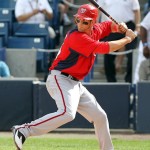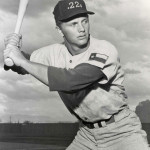What would it take for the following Batters to become even better Hitters than they have already presented themselves to Be?
Giancarlo Stanton, Miguel Cabrera, Paul Goldschmidt, Bryce Harper, and Mike Trout are considered by most “experts” to be the “elite” hitters in Major League Baseball. They are all identified as “Super-Stars” who have the ability to change the course of a game if they are allowed to swing the bat in a crucial situation at a critical time in the contest. Since they are all “good” at their trade, they most likely wait patiently for the pitcher to make a mistake and then capitalize on it . That’s what a good hitter does! But the “Great” hitter is one whose mechanical advantage allows him to see and hit a pitcher’s best pitch, especially under those critical, game-saving circumstances.
Giancarlo Stanton has not yet reach that stage of “Batting Proficiency” where he could be counted on to consistently hit the Pitcher’s “best pitch.” In fact, in most critical situations, he seems to be consistently fooled by the pitcher’s “best pitch.” But at this point in his consistent development, he does something better than the other 4 members of my illustrious cinquain of elite performers. The best way to describe that attribute which distinguishes Giancarlo from all Major-League-Batters was already elaborated upon in my essay: Hip Action—Fulcrum for Speed and Power to “Swing.”
Many baseball players have taken a liking to playing golf. Even a casual observer can notice the similarities of the swings in the application of strokes for each sport. Many batting coaches at all levels of play, from Little-League to the “Bigs,” are advocating the notion that the main ingredients to these swings are identical, and therefore a prospective baseball batter should adjust the mechanics of his swing to conform to those certain facets of the ideal golfer’s. The theory seems plausible, but under the scrutiny of scientific examination the idea becomes fraught with microscopic flaws that preclude ultimate batting proficiency.
An astute analysis of the golf swing differentiates two distinct actions of the hips when negotiating the two basic situations that a golfer can encounter. He/she is either swinging long, or short. When going for distance, with a wood or iron, the swing is facilitated by the powerful fulcrum effect of the front hip. The weight of the back hip and leg are pulled around and forward by the slow and sustained torque action of the muscles about the front hip and leg. A slight push of the back foot accompanies this action, and the body appears to end up in position close to an angle of 180 degrees, with head to toe perpendicular to the ground.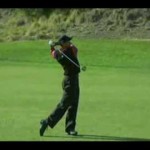
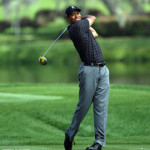
On short shots, the mechanics of the hips are such that the weight is concentrated on the back leg where the fulcrum effect is negotiated by the back hip. As the forward swing begins, the front hip is being pulled around and backward, a distance of the width of pelvis, by the torque action of the muscles stabilizing the back hip. 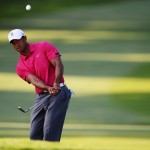 Obviously, the first swing is the power swing.
Obviously, the first swing is the power swing.
The power of the baseball swing differs from the golf swing in one major way, for two separate reasons. The fulcrum for the hip-action in the perfect baseball swing is neither the front nor the back, but rather the center, as both the front and back (hips) work synergistically to maximize the speed of the turn along a constant vertical axis and horizontal plane. (The contrasting actions are analogous to the “hinge-swing” closing and opening of a gate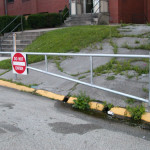 , and the movement of a turnstile.
, and the movement of a turnstile.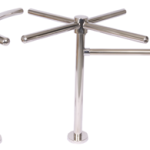 ) In Baseball, the front foot secures the ground with such force from the straightening front leg that the front hip is being forced open as the back hip is driven forward with equipollence by the aid of a forward driving back bent-knee. If performed properly, the vertical axis of spine and upper body remains constant while the hips are rotating along a consistent horizontal plane. The angle formed, by a diagonal front leg and an upper body and head, as the swing is commencing and concluding is 180 degrees (or slightly less).
) In Baseball, the front foot secures the ground with such force from the straightening front leg that the front hip is being forced open as the back hip is driven forward with equipollence by the aid of a forward driving back bent-knee. If performed properly, the vertical axis of spine and upper body remains constant while the hips are rotating along a consistent horizontal plane. The angle formed, by a diagonal front leg and an upper body and head, as the swing is commencing and concluding is 180 degrees (or slightly less).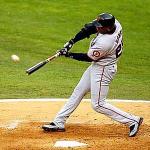
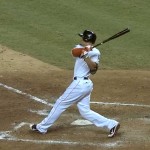
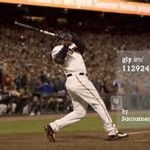
The dynamics of the golf swing involve a relaxed state of the body as it is gliding on a consistent steady course guided by a non-ballistic flow of the hips that carries the entire back-side (or front-side) of the body onto the weight of the front (or back) foot. 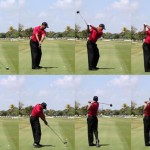 Since the power-fulcrum is the front hip (in a power swing), the slow buildup of torque in the “back-swing” precludes any loss of potential energy as the body efficiently glides through its range of motion. The head movement is minimal, yet unavoidable since all body parts revolve around the hinged front (or back) hip as the club is approaching a stationary object. Such a negligible infraction, while negotiating a moving object, would have a more debilitating affect, depending on the degree of difficulty.
Since the power-fulcrum is the front hip (in a power swing), the slow buildup of torque in the “back-swing” precludes any loss of potential energy as the body efficiently glides through its range of motion. The head movement is minimal, yet unavoidable since all body parts revolve around the hinged front (or back) hip as the club is approaching a stationary object. Such a negligible infraction, while negotiating a moving object, would have a more debilitating affect, depending on the degree of difficulty.
In baseball, the most effective batsman will first assume a stance whose center of gravity is low enough to accommodate the rigors of fast moving ballistic reactions which are needed to offset the nuances of a baseball’s speed and directional proclivities. Instead of the slow steady flow of a golfer’s semi-flaccid body, the batter of a baseball has to have a body taut and ready to response in a “nanosecond” to the many possibilities that will confront him. Therefore the action of “turnstile” hips is what is needed to respond quickly to a 100-MPH fastball, or to patiently but apprehensively await the illusory action of curving or other off-speed pitches.
The “turnstile” action of the batter’s swing allows the vertical axis of the body to remain intact, which facilitates the least amount of head movement. The less head movement, the better the batter can detect the nuances of the speeding ball!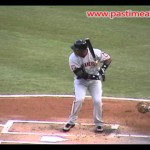
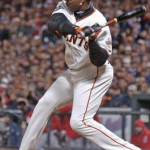
IT is said that Mark McGwire is a pretty good golfer. If he played golf during the baseball season, he must have had a mentality that could easily adapt to each sport. If you ever watched him take batting practice before the game you saw him put on a show with what was essentially the same mechanism as in his golf swing. His stance was tall. The ball was not thrown with powering or deceptive intent. He stepped forward and swung off his front foot and hip. But during a game, he was in a low crouch that provided a low center of gravity, which afforded a much better opportunity to handle the moving ball with speed and precision.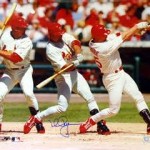
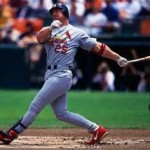

A 450-foot drive, off a well-attuned swing from Mark McGwire, gave reason to applaud a magnificent stroke. But, how was it that he sometimes hit a prodigious “shot” for 580 feet? When you really live up to that favorite expression of batters, “I got it all”, your bat made contact with the ball while the body was turning through the swing with the vertical axis intact! The centripetal force provided by the stable position of the vertical axis produces the powerful centrifugal force, which magnifies the power elicited by the turning hips and shoulders. (Read article – 9/13/2013 – “Inertia…”)__________________________________
Because of Stanton’s muscular statuesque 6 foot 6 inch, 240 lb. body, most people would assume that his physique alone determines the power and strength of Giancarlo’s swing. No doubt his “natural” physical endowment contributes greatly to his phenomenal feats of strength. But the “power” that facilitates the consistent manifestation of that strength is the Principle to which his body applies perfect accommodation. Whenever Stanton connects with a wicked line-drive or a towering Home Run, the speed at which it leaves his bat and the distance it travels is consistently greater than any other Major-League player.
Over the years that he has been in the “Big-Leagues” his consistency for making solid contact has improved as he has consciously made an effort to decrease his stride and attain better visual discernment of the pitched ball. In the past, even with his exaggerated stride, he still managed to keep his “vertical axis” intact at the point where his front foot planted and allowed for complete facilitation of the “hip-action” spoken about previously.
Even with the horrific injury to his face by a pitched ball last year, he has managed a first half surge that defies belief. But, in order to take full advantage of his profound and fluid “hip-action” he must find a genuine means for eliminating the stride altogether. No one seems to realize that the “stride” (especially the leg-kick) is not necessary to facilitate the swing. In order for the swing to begin (properly), the front foot must be planted. Yet most (if not all) batters relegate themselves to vulnerability to the greatest “margin-for-error” in the entire batting regimen. What is the only way to assure oneself of readiness to swing his bat? The only place where “timing” can be disrupted is in the stride. The batter never really knows when to put his foot down. Therefore, never pick up the front foot. Simply generate the needed momentum prior to swing by readying the hips to bring the shoulders, arms, and bat to the ball. By not striding, any batter will see the ball with utmost clarity, and allow for much better contact, no matter how strong he is.
With his natural advantage, when Giancarlo Stanton perfects his “NO-STRIDE” approach to hitting, he will be Baseball’s Best Batter! But I guess we will have to wait 4 to 6 weeks before he can resume his dominance in punishing a pitched ball. G.S., don’t get discouraged. Best to the Best!
Coming Soon: Miguel Cabrera – How can he be better than he is now?
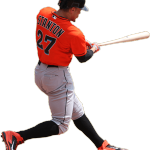
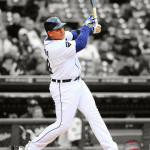
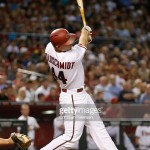
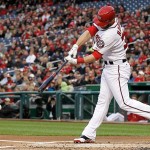
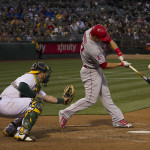
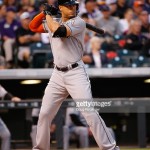
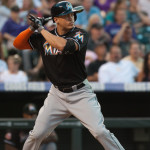


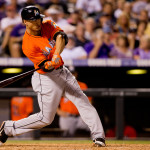

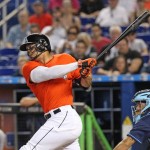

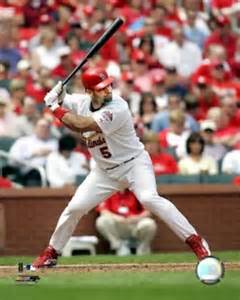
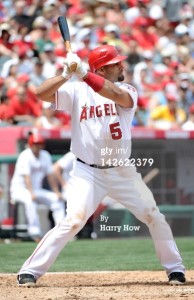
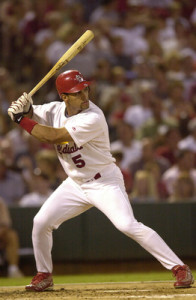
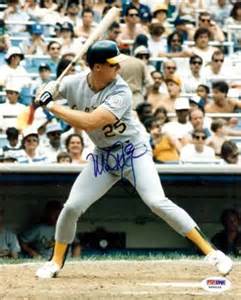
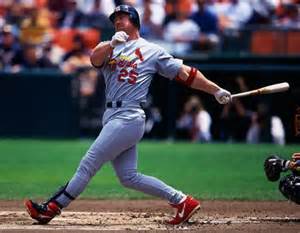
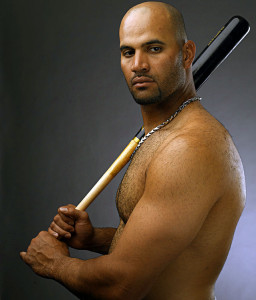
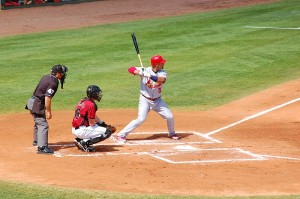
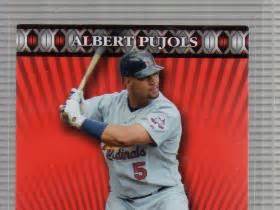
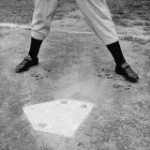
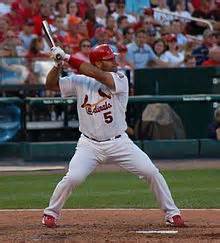
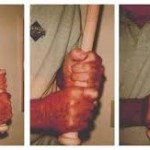
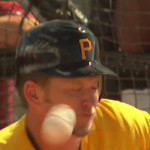
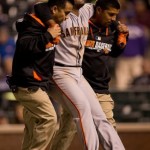
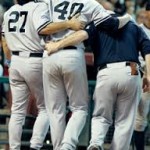

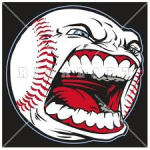
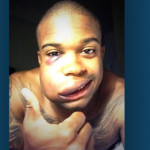
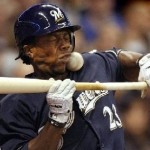
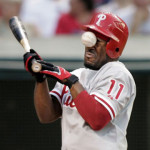
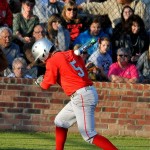
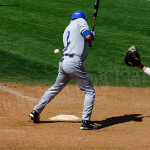
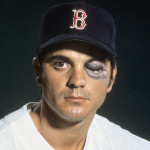
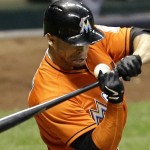

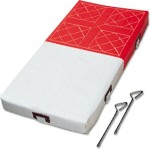 to diminish the prospect of both injuries and disputes. The dispute that occurs most often has to do with a runner from Home to First who is running up the First Base line after striking out or bunting.
to diminish the prospect of both injuries and disputes. The dispute that occurs most often has to do with a runner from Home to First who is running up the First Base line after striking out or bunting.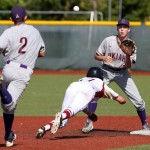

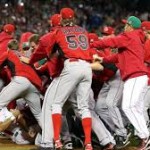
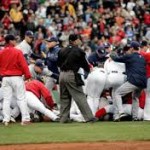
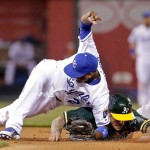 The consequence of his ill-timing is disastrous to the fielder, potentially hazardous to the runner/slider, and enormously disastrous to the sequence of events that follow during this game, and the games that follow.
The consequence of his ill-timing is disastrous to the fielder, potentially hazardous to the runner/slider, and enormously disastrous to the sequence of events that follow during this game, and the games that follow.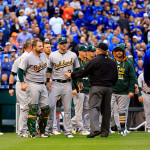 Baseball, at its Finest!? NO!
Baseball, at its Finest!? NO!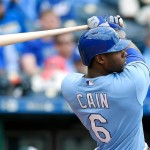 . You would have thought that the baseball “gods” would have been appeased by the fortuitous outcome for those beleaguered warriors. But NOOOO! The worst was yet to come.
. You would have thought that the baseball “gods” would have been appeased by the fortuitous outcome for those beleaguered warriors. But NOOOO! The worst was yet to come.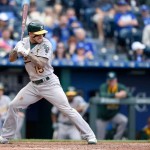 of the opposing team with a 95 MPH fast-ball, for which he was immediately ejected (without warning)
of the opposing team with a 95 MPH fast-ball, for which he was immediately ejected (without warning)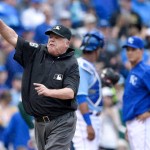 . Then the “Bean-ball” war began, and carried onto the next day’s ballgame. What a blatant display of unsportsmanship, combined with lack of respect, human dignity, and an unimaginable demonstration of bestial ferocity! All because of a simple misappropriation of logistical intent! And, of course, the team that started that day’s fracas lost the game (when will “idiots” learn – “Karma don’t do dat”). (And the following game ended the same way
. Then the “Bean-ball” war began, and carried onto the next day’s ballgame. What a blatant display of unsportsmanship, combined with lack of respect, human dignity, and an unimaginable demonstration of bestial ferocity! All because of a simple misappropriation of logistical intent! And, of course, the team that started that day’s fracas lost the game (when will “idiots” learn – “Karma don’t do dat”). (And the following game ended the same way 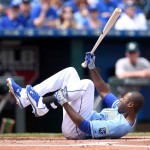
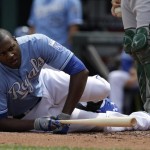 Karma again prevailing.)
Karma again prevailing.)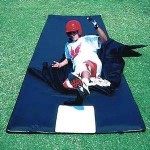
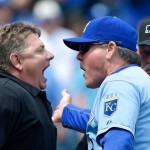 That would’ve been fine if the victim and his team didn’t suffer the consequence of the disabled list and rehabilitation, especially to a “star” player. Nor would pitchers feel the obligation to “protect” their own players! The ultimate consequence to that pitcher or team whose propensity to throw recklessly “inside” is the uncompromising prospect of putting a runner immediately into scoring position, not to mention the beneficence to those runners already on base. Only the most selfish, arrogant, and probably non-contending teams would consider such flagrant dis-concern for winning. ( See a previous article, on my blog, dated March 19, 2015.)
That would’ve been fine if the victim and his team didn’t suffer the consequence of the disabled list and rehabilitation, especially to a “star” player. Nor would pitchers feel the obligation to “protect” their own players! The ultimate consequence to that pitcher or team whose propensity to throw recklessly “inside” is the uncompromising prospect of putting a runner immediately into scoring position, not to mention the beneficence to those runners already on base. Only the most selfish, arrogant, and probably non-contending teams would consider such flagrant dis-concern for winning. ( See a previous article, on my blog, dated March 19, 2015.)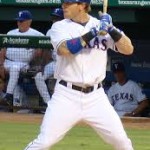
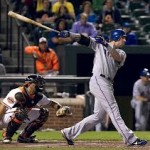
 ), or the highest echelons of the organization whom this player represents.
), or the highest echelons of the organization whom this player represents.
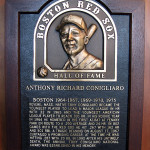

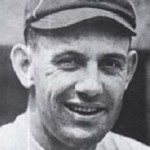
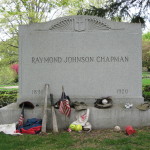
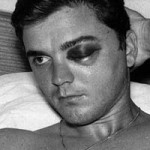
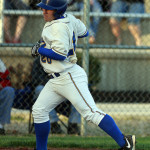
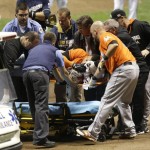
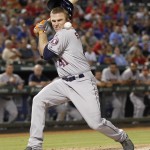
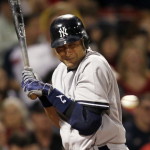
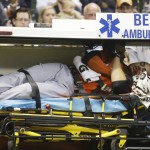
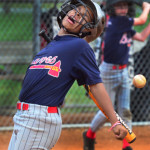
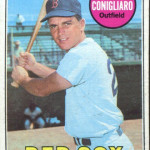
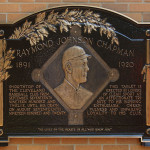
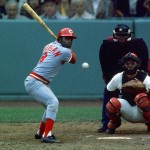
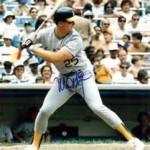
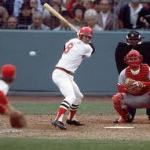
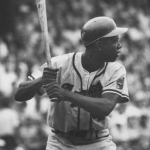
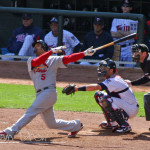
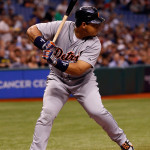
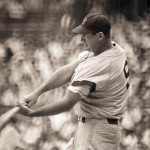
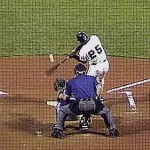

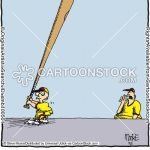
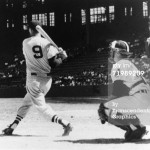
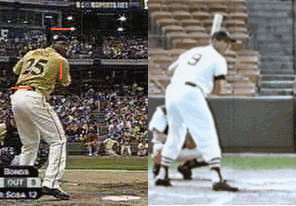
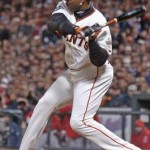
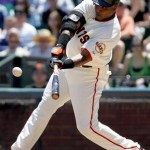
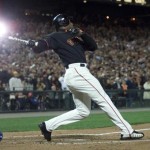
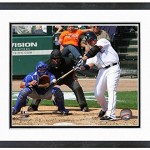
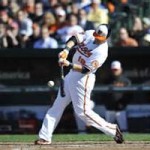
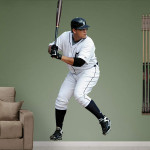
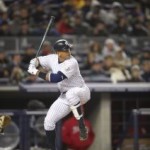 that front foot, while in “suspended-animation” is subject to inconsistent “planting” that is the most crucial element necessary in initiating the swing. If “timing” isn’t perfect, such batter is either Late, or Early with the “plant”. When asked how he manages his ability to get out of momentary slumps, he offered the following statement, “I just don’t stride with my front foot, and it works itself out”. Duh! That’s the secret to the natural success that anyone would experience. So why doesn’t he do that all the time?
that front foot, while in “suspended-animation” is subject to inconsistent “planting” that is the most crucial element necessary in initiating the swing. If “timing” isn’t perfect, such batter is either Late, or Early with the “plant”. When asked how he manages his ability to get out of momentary slumps, he offered the following statement, “I just don’t stride with my front foot, and it works itself out”. Duh! That’s the secret to the natural success that anyone would experience. So why doesn’t he do that all the time?
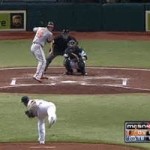 .
.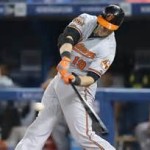
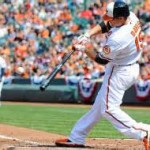
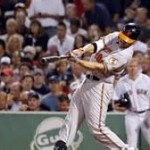 With his natural power ( not needing to be steroid enhanced) Chris is the front-runner to legitimately replicate the Bonds’ mystique and carve out a niche in Baseball’s legendary “Hall of Heroes”. But only if he changes his false-impression of “proper hitting technique”! He must incorporate a new stance, and approach to the ball with thought-processes and actions of the scientific application of the proper batting mechanics practiced most consistently by Barry, and Mark McGwire (the vanguard to such scientific-artistry being attributable to Ted Williams
With his natural power ( not needing to be steroid enhanced) Chris is the front-runner to legitimately replicate the Bonds’ mystique and carve out a niche in Baseball’s legendary “Hall of Heroes”. But only if he changes his false-impression of “proper hitting technique”! He must incorporate a new stance, and approach to the ball with thought-processes and actions of the scientific application of the proper batting mechanics practiced most consistently by Barry, and Mark McGwire (the vanguard to such scientific-artistry being attributable to Ted Williams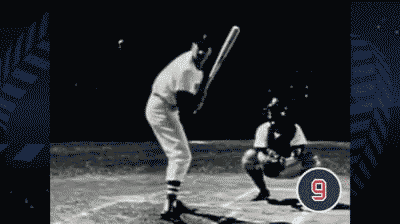 ).
).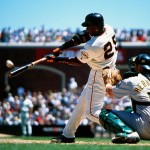
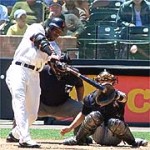

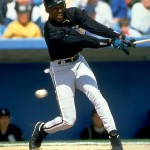
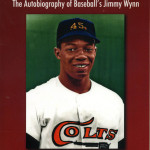
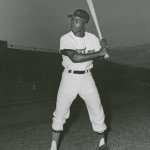
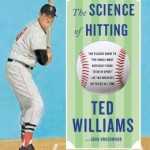
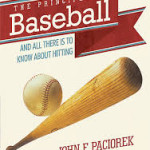
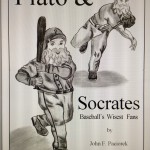
 Relativity Theories precipitated the onset of Quantum Mechanics whose main postulate states that “at the fundamental levels of matter causation is a matter of statistical probabilities, not certainties.” But Newton’s advanced mathematical appliance of Calculus certainly made it evident that previously incomprehensible circumstances were now afforded a venue from which to reduce those margins for error that had previously exacerbated most querulous situations.
Relativity Theories precipitated the onset of Quantum Mechanics whose main postulate states that “at the fundamental levels of matter causation is a matter of statistical probabilities, not certainties.” But Newton’s advanced mathematical appliance of Calculus certainly made it evident that previously incomprehensible circumstances were now afforded a venue from which to reduce those margins for error that had previously exacerbated most querulous situations.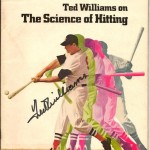
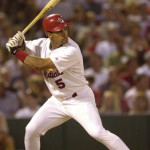
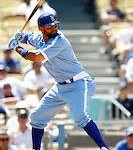 (Thus the recycling of “team-building” continues until the futility of errant ways obviates, and heads roll.)
(Thus the recycling of “team-building” continues until the futility of errant ways obviates, and heads roll.)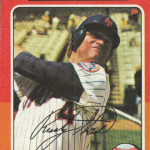 But without a thorough investigation into the depths of mechanical understanding, the closest his trial and error tactics will get him to his highest proficiency is the range encircling the .300 mark. Not bad, but far from superlative achievement!
But without a thorough investigation into the depths of mechanical understanding, the closest his trial and error tactics will get him to his highest proficiency is the range encircling the .300 mark. Not bad, but far from superlative achievement!